Top 5 Startup Project Management Methodologies in 2024

How can startups navigate the whirlwind of innovation and competition, ensuring their projects stay on course amidst the ever-changing tides of technology and business landscapes? In the quest for success, the answer lies in effective project management methodologies—strategies that offer the agility, adaptability, and precision necessary to thrive in the fast-paced world of entrepreneurship.
As we step into the year 2024, startups are embarking on a journey of exploration, seeking the perfect recipe for project management success. But amidst the plethora of options, which methodologies hold the key to unlocking the full potential of startup ventures? Join us as we embark on a journey to uncover the top five project management methodologies poised to redefine the startup landscape in 2024.
Through this exploration, we’ll unravel the essence of each methodology, exploring their principles, applications, and the transformative advantages they offer to startups daring to carve their path to success.
Agile Methodology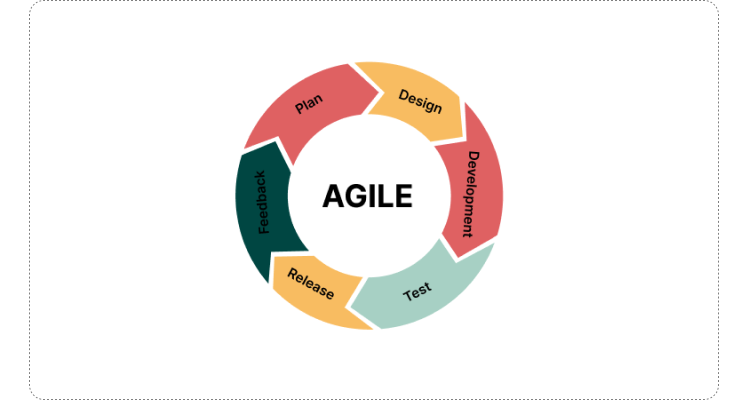
Agile methodology remains at the forefront of startup project management in 2024, emphasizing flexibility, collaboration, and iterative development. Startups adopt Agile to quickly respond to changes in market demands, incorporate customer feedback, and deliver value in shorter cycles. The Agile framework comprises principles such as customer satisfaction through early and continuous delivery, welcoming changing requirements, and promoting sustainable development practices.
Key Principles of Agile Methodology
- Customer Collaboration Agile methodology places a strong emphasis on engaging customers throughout the development process, soliciting feedback, and aligning product features with customer needs and preferences.
- Iterative Development Agile projects progress through iterative cycles, with each iteration delivering incremental value to customers. This iterative approach allows startups to quickly respond to changes in market conditions and customer requirements.
- Adaptability Agile teams embrace change as a natural part of the development process, welcoming new insights, feedback, and priorities. This adaptability enables startups to pivot rapidly and seize emerging opportunities.
- Self-Organizing Teams Agile methodology empowers cross-functional teams to self-organize and make decisions collaboratively. By fostering autonomy and accountability, Agile teams are better equipped to respond to challenges and drive innovation.
- Continuous Improvement Agile methodology promotes a culture of continuous learning and improvement, encouraging teams to reflect on their processes, identify areas for enhancement, and implement iterative changes.
Practices of Agile Methodology
- Scrum Framework: One of the most widely adopted Agile frameworks, Scrum provides a structured approach to project management through time-boxed iterations called sprints. Scrum teams conduct regular ceremonies such as sprint planning, daily stand-ups, sprint review, and sprint retrospective to foster collaboration, transparency, and continuous improvement.
- Kanban Method: Kanban, another popular Agile framework, visualizes workflow and limits work in progress to optimize efficiency and minimize bottlenecks. Kanban boards provide real-time visibility into the status of tasks, enabling teams to prioritize work, identify bottlenecks, and maintain a smooth flow of work.
- Lean Principles: Derived from Lean manufacturing principles, Lean practices emphasize the elimination of waste, the maximization of value, and the optimization of processes. Lean methodologies such as Lean Startup and Lean Software Development advocate for rapid experimentation, validated learning, and continuous delivery of customer value.
- Cross-Functional Collaboration: Agile methodology encourages collaboration among cross-functional teams, bringing together individuals with diverse skill sets and perspectives to solve complex problems. By fostering communication and collaboration, Agile teams can leverage collective intelligence and deliver innovative solutions.
- Agile Metrics and Feedback Loops: Agile teams rely on metrics such as velocity, cycle time, and burndown charts to measure progress, identify bottlenecks, and make data-driven decisions. Regular feedback loops, both internal and external, enable teams to validate assumptions, course-correct as needed, and ensure alignment with customer expectations.
Applications of Agile Methodology in Startup Environments
- Rapid Prototyping and MVP Development: Agile methodology enables startups to quickly prototype ideas, gather feedback from users, and iterate on product features. By embracing an iterative approach to development, startups can accelerate time-to-market and validate product-market fit more effectively.
- Flexibility to Pivot: Startups operating in dynamic markets often face changing customer needs, competitive pressures, and technological advancements. Agile methodology provides startups with the flexibility to pivot their strategies, experiment with new features, and adapt to evolving market conditions.
- Continuous Innovation: In today’s hypercompetitive landscape, startups must continuously innovate to stay ahead of the curve. Agile methodology fosters a culture of innovation by encouraging experimentation, embracing failure as a learning opportunity, and empowering teams to challenge the status quo.
- Enhanced Stakeholder Engagement: Agile methodology promotes regular interaction and collaboration with stakeholders, including customers, investors, and partners. By involving stakeholders throughout the development process, startups can gain valuable insights, build trust, and ensure alignment with business objectives.
- Scalable and Sustainable Growth: Agile methodology provides startups with a scalable and sustainable approach to growth, allowing them to incrementally build and refine their products based on customer feedback and market demand. By prioritizing value delivery and eliminating waste, startups can optimize their resources and achieve long-term success.
Scrum Methodology
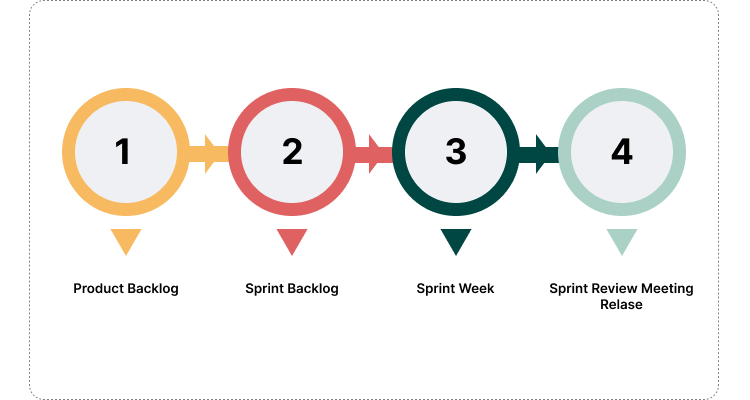
At its core, Scrum methodology is a framework—a set of principles, roles, ceremonies, and artifacts designed to guide teams through the iterative development process. Rooted in the Agile Manifesto, Scrum embodies the values of collaboration, self-organization, and continuous improvement, enabling teams to navigate uncertainty and complexity with confidence and clarity. Central to Scrum methodology is the concept of the Scrum Team, a cross-functional unit responsible for delivering increments of product functionality within short, time-boxed iterations called sprints.
Key Principles of Scrum Methodology
- Empirical Process Control: Scrum methodology is founded on the principles of transparency, inspection, and adaptation. By embracing an empirical approach to project management, Scrum teams rely on real-time feedback and data-driven insights to inform decision-making and drive continuous improvement.
- Iterative Development: Scrum projects progress through a series of iterative cycles, with each sprint delivering a potentially shippable increment of product functionality. This iterative approach allows teams to quickly respond to changes in requirements, gather feedback from stakeholders, and adapt their plans accordingly.
- Self-Organizing Teams: Scrum methodology empowers cross-functional teams to self-organize and make decisions collaboratively. By promoting autonomy, accountability, and shared ownership, Scrum teams are better equipped to solve complex problems, drive innovation, and deliver high-quality results.
- Time-Boxed Sprints: The heartbeat of Scrum methodology is the sprint—a fixed-length iteration typically lasting between one to four weeks. During each sprint, the Scrum Team commits to delivering a set of user stories or product backlog items, working collaboratively to achieve the sprint goal and deliver business value.
- Continuous Improvement: Scrum methodology fosters a culture of continuous learning and improvement, encouraging teams to reflect on their processes, identify areas for enhancement, and experiment with new practices. Through regular retrospectives and sprint reviews, Scrum teams strive to optimize their performance and maximize their impact.
Practices of Scrum Methodology
- Sprint Planning: At the start of each sprint, the Scrum Team convenes for a sprint planning meeting to discuss and prioritize the work to be done. During this meeting, the Product Owner presents the sprint backlog—a prioritized list of user stories or product backlog items—and the team collaboratively selects the work they believe they can complete within the sprint.
- Daily Stand-ups: Throughout the sprint, the Scrum Team holds daily stand-up meetings to synchronize their activities, share progress, and identify any impediments. During these brief, time-boxed meetings, each team member answers three questions: What did I accomplish yesterday? What will I do today? Are there any impediments blocking my progress?
- Sprint Review: At the end of each sprint, the Scrum Team conducts a sprint review meeting to demonstrate the completed work to stakeholders and gather feedback. During this meeting, the team showcases the increment of product functionality delivered during the sprint, solicits feedback from stakeholders, and collaboratively discusses potential enhancements or improvements.
- Sprint Retrospective: Following the sprint review, the Scrum Team holds a sprint retrospective meeting to reflect on their performance and identify opportunities for improvement. During this meeting, team members discuss what went well, what could be improved, and actionable steps they can take to enhance their processes in the next sprint.
- Product Backlog Refinement: In addition to sprint-related activities, the Scrum Team engages in ongoing product backlog refinement to ensure that the product backlog remains prioritized, groomed, and ready for future sprints. This collaborative effort involves the Product Owner, Scrum Team, and other stakeholders in reviewing, clarifying, and estimating backlog items as needed.
Applications of Scrum Methodology in Startup Environments
Agile Product Development: Startups leverage Scrum methodology to accelerate product development, iterate on features, and deliver value to customers in short cycles. By embracing an iterative approach, startups can quickly validate assumptions, gather feedback, and adapt their product roadmap based on market demand.
- Cross-Functional Collaboration: Scrum methodology fosters collaboration among cross-functional teams, bringing together individuals with diverse skill sets and perspectives to solve complex problems. By promoting communication, transparency, and shared ownership, Scrum teams are better equipped to deliver innovative solutions and drive business outcomes.
- Time-to-Market Optimization: In today’s fast-paced market, startups must move quickly to capitalize on emerging opportunities and stay ahead of the competition. Scrum methodology enables startups to optimize their time-to-market by breaking down projects into manageable increments, prioritizing work based on customer value, and delivering high-quality results with each sprint.
- Customer-Centric Development: Startups prioritize customer feedback and market validation, using Scrum methodology to continuously iterate on their product and align with customer needs. By engaging stakeholders throughout the development process, startups can ensure that their product roadmap remains customer-centric and responsive to evolving requirements.
- Scalable Growth Strategies: As startups scale and evolve, Scrum methodology provides a scalable framework for managing complexity, fostering innovation, and sustaining growth. By embracing Agile practices such as self-organization, adaptive planning, and continuous improvement, startups can navigate uncertainty with confidence and chart a course toward sustainable success.
Kanban Methodology
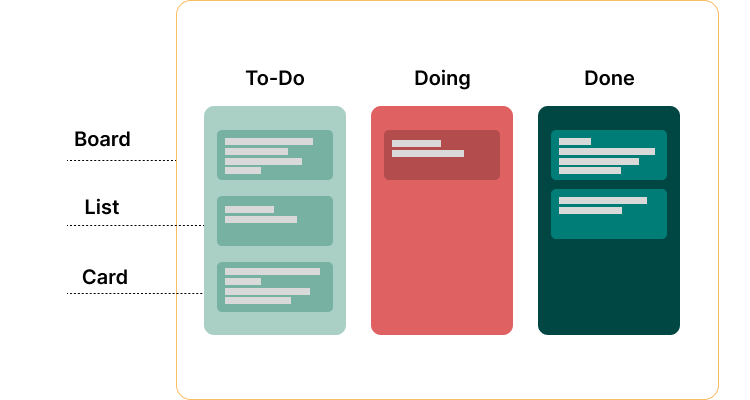
Kanban methodology is a workflow management system that originated from the Toyota Production System in the 1940s. The term “Kanban” translates to “visual card” in Japanese, referring to the visual signals used to manage inventory and production processes. In the context of project management, Kanban methodology leverages visual boards, cards, and columns to visualize work, limit work in progress (WIP), and optimize flow. At its core, Kanban methodology embodies the principles of Lean thinking, emphasizing the elimination of waste, the maximization of value, and the continuous improvement of processes.
Key Principles of Kanban Methodology
- Visual Management: Kanban methodology relies on visual boards to represent the workflow, with each column representing a stage of the process and each card representing a work item. By visualizing work, teams gain transparency into their processes, identify bottlenecks, and make informed decisions to optimize flow.
- Limiting Work in Progress (WIP): Kanban methodology imposes constraints on the number of work items allowed in each stage of the workflow. By limiting WIP, teams prevent overburdening, reduce context switching, and maintain a smooth flow of work throughout the system.
- Flow Optimization: Kanban methodology prioritizes the smooth and continuous flow of work from start to finish. By minimizing interruptions, reducing wait times, and eliminating waste, teams can optimize flow and maximize efficiency throughout the workflow.
- Pull-Based System: Kanban methodology operates on a pull-based system, where work is pulled into the system based on available capacity rather than pushed based on arbitrary deadlines. This approach ensures that work is completed at a sustainable pace, with a focus on delivering value when it is needed most.
- Continuous Improvement: Kanban methodology fosters a culture of continuous improvement, encouraging teams to reflect on their processes, identify areas for enhancement, and implement iterative changes. By embracing feedback and experimentation, teams can evolve and adapt their workflows to meet changing demands and opportunities.
Practices of Kanban Methodology
- Kanban Board: The central artifact of Kanban methodology is the Kanban board, which visualizes the workflow and work items. Typically divided into columns representing different stages of the process (e.g., To Do, In Progress, Done), the Kanban board provides teams with a clear visualization of their work and progress.
- Work Item Cards: Each work item in Kanban methodology is represented by a card on the Kanban board. Work item cards contain essential information such as task descriptions, assignees, due dates, and dependencies, enabling teams to track and manage their work effectively.
- WIP Limits: Kanban methodology imposes WIP limits on each column of the Kanban board, restricting the number of work items that can be in progress at any given time. WIP limits prevent overburdening, reduce multitasking, and maintain a steady flow of work throughout the system.
- Cumulative Flow Diagram: The cumulative flow diagram is a visual representation of the flow of work items through the Kanban system over time. By analyzing the cumulative flow diagram, teams can identify trends, bottlenecks, and opportunities for improvement in their workflow.
- Regular Cadence: Kanban methodology emphasizes the importance of maintaining a regular cadence for activities such as stand-up meetings, backlog grooming sessions, and retrospectives. These regular cadences enable teams to synchronize their efforts, communicate effectively, and continuously improve their processes.
Applications of Kanban Methodology in Startup Environments
- Agile Product Development: Startups leverage Kanban methodology to manage product development, prioritize features, and deliver value to customers predictably and efficiently. By visualizing their workflow, limiting WIP, and optimizing flow, startups can accelerate time-to-market and respond quickly to changing market demands.
- Lean Startup Practices: Kanban methodology aligns closely with Lean Startup practices, emphasizing the importance of validated learning, rapid experimentation, and customer feedback. Startups use Kanban to iterate on their minimum viable products (MVPs), gather feedback from users, and adapt their product roadmap based on validated learning.
- Continuous Delivery and Deployment: Kanban methodology enables startups to achieve continuous delivery and deployment by streamlining their development and deployment processes. By optimizing flow, reducing lead times, and automating repetitive tasks, startups can deliver value to customers more frequently and reliably.
- Customer Support and Service: Startups utilize Kanban methodology to manage customer support and service activities, such as ticket triaging, issue resolution, and service requests. By visualizing their support workflow, setting WIP limits, and prioritizing high-impact tasks, startups can improve customer satisfaction and loyalty.
- Marketing and Sales Campaigns: Kanban methodology extends beyond software development to marketing and sales campaigns, enabling startups to manage campaign planning, execution, and optimization. By visualizing their campaign workflow, tracking key metrics, and iterating on their strategies, startups can achieve better results and ROI from their marketing efforts.
Lean Startup Methodology
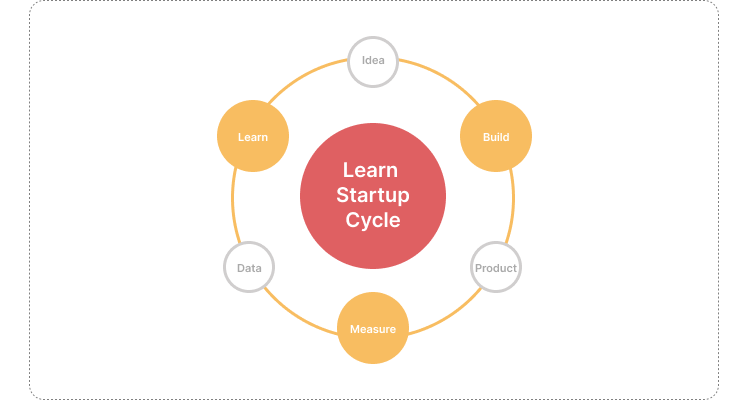
The Lean Startup methodology is grounded in the principles of Lean manufacturing and Agile development, adapted to the unique challenges and opportunities of entrepreneurship. At its core, the Lean Startup methodology is a scientific approach to building and growing startups, focused on reducing waste, maximizing value, and accelerating learning. Central to the Lean Startup methodology is the concept of the Minimum Viable Product (MVP)—a version of a product with the minimum features required to test hypotheses and gather feedback from customers.
Key Principles of Lean Startup Methodology
- Build-Measure-Learn Feedback Loop: The cornerstone of the Lean Startup methodology is the Build-Measure-Learn feedback loop, which guides the iterative process of product development. Startups build a Minimum Viable Product (MVP), measure its performance using actionable metrics, and learn from customer feedback to inform subsequent iterations.
- Validated Learning: Lean Startup methodology prioritizes validated learning over assumptions and guesswork. By conducting experiments, gathering data, and testing hypotheses, startups can validate or invalidate their assumptions and make informed decisions based on evidence rather than intuition.
- Pivot and Persevere: Lean Startup methodology encourages startups to pivot their strategies or persevere based on validated learning. A pivot involves making a fundamental change to the product, strategy, or business model in response to feedback, while perseverance involves doubling down on what’s working and scaling the business.
- Innovation Accounting: Lean Startup methodology introduces the concept of innovation accounting—a metrics-based approach to measuring progress and assessing the viability of startup initiatives. By focusing on actionable metrics such as customer acquisition cost (CAC), lifetime value (LTV), and retention rate, startups can track their progress and make data-driven decisions.
- Continuous Deployment: Lean Startup methodology promotes a culture of continuous deployment, enabling startups to release new features and updates to customers rapidly. By embracing automation, continuous integration, and continuous deployment practices, startups can shorten feedback loops and iterate on their product more efficiently.
Practices of Lean Startup Methodology
- Hypothesis Testing: Lean Startup methodology begins with identifying key hypotheses and assumptions about the target market, customer needs, and product features. Startups conduct experiments to test these hypotheses, gathering data and insights to validate or invalidate their assumptions.
- Minimum Viable Product (MVP): The Minimum Viable Product (MVP) is a core concept of Lean Startup methodology, representing the simplest version of a product that can be launched to test hypotheses and gather feedback from customers. MVPs are designed to validate product-market fit, reduce development time, and mitigate risk.
- Split Testing (A/B Testing): Lean Startup methodology leverages split testing, also known as A/B testing, to compare different versions of a product or feature and determine which performs better with users. By randomly assigning users to different variations and measuring their responses, startups can optimize their product for maximum impact.
- Customer Development: Lean Startup methodology emphasizes the importance of customer development, which involves engaging with customers early and often to understand their needs, preferences, and pain points. By conducting interviews, surveys, and usability tests, startups can gain valuable insights and validate their product hypotheses.
- Agile Development: Lean Startup methodology aligns closely with Agile development practices, emphasizing rapid iteration, cross-functional collaboration, and continuous delivery. By breaking down development tasks into small, manageable increments, startups can respond quickly to feedback, adapt to changing requirements, and deliver value to customers iteratively.
Applications of Lean Startup Methodology in Startup Environments
- Product Validation: Startups use Lean Startup methodology to validate their product ideas, ensuring that there is a demand for their offering before investing significant time and resources into development. By launching MVPs, gathering feedback, and iterating based on validated learning, startups can increase their chances of success in the market.
- Market Entry Strategy: Lean Startup methodology helps startups navigate the complexities of entering new markets by conducting market research, identifying customer segments, and testing different go-to-market strategies. By experimenting with different pricing models, distribution channels, and marketing tactics, startups can find the most effective approach to entering and scaling their business.
- Agile Product Development: Lean Startup methodology enables startups to adopt an Agile approach to product development, iterating on their product based on customer feedback and market demand. By embracing continuous deployment, split testing, and rapid iteration, startups can accelerate their product development cycles and deliver value to customers more quickly.
- Business Model Innovation: Lean Startup methodology encourages startups to innovate not only with their product but also with their business model. By testing different revenue streams, pricing strategies, and customer acquisition channels, startups can optimize their business model for scalability, profitability, and long-term growth.
- Lean Operations: Lean Startup methodology extends beyond product development to operations, encouraging startups to streamline their processes, eliminate waste, and maximize efficiency. By adopting Lean principles such as value stream mapping, Kanban, and Kaizen, startups can optimize their operations and create a culture of continuous improvement.
Waterfall Methodology
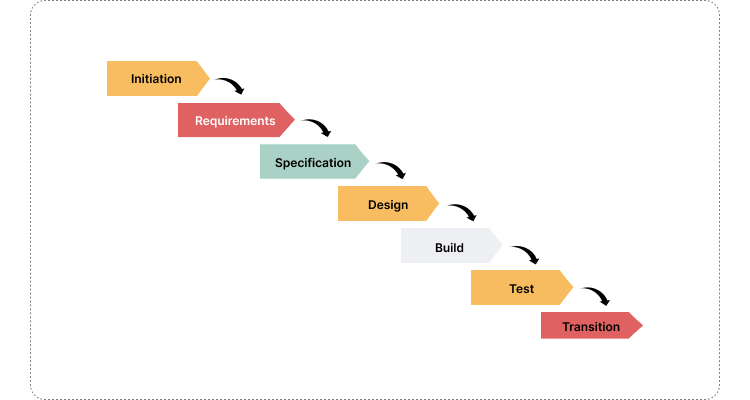
The Waterfall methodology is a sequential project management approach where tasks are completed linearly, flowing downwards like a waterfall. It follows a predefined sequence of phases, each building upon the deliverables of the previous phase. The key phases of the Waterfall methodology typically include requirements gathering, design, implementation, testing, deployment, and maintenance. Unlike Agile methodologies, which emphasize flexibility and adaptability, the Waterfall methodology follows a rigid and deterministic process, with little room for changes once the project has commenced.
Key Principles of Waterfall Methodology
- Sequential Phases: The Waterfall methodology divides the project lifecycle into distinct phases, with each phase dependent on the completion of the previous one. This sequential approach provides clarity and structure, allowing teams to focus on one phase at a time and minimize ambiguity.
- Comprehensive Documentation: Waterfall projects require extensive documentation at each phase of the project lifecycle, including requirements specifications, design documents, test plans, and user manuals. This documentation serves as a blueprint for the project, providing a clear understanding of the project scope, objectives, and deliverables.
- Predictable Progression: The Waterfall methodology follows a predictable progression from initiation to completion, with well-defined milestones and deliverables at each phase. This predictability enables stakeholders to track progress, manage expectations, and make informed decisions about resource allocation and project timelines.
- Limited Flexibility: Unlike Agile methodologies, the Waterfall methodology offers limited flexibility to accommodate changes once the project has commenced. Changes to requirements, scope, or deliverables may require significant rework and can disrupt the sequential flow of the project, leading to delays and cost overruns.
- Quality Assurance: The Waterfall methodology emphasizes rigorous testing and quality assurance processes to ensure that deliverables meet the specified requirements and quality standards. Testing typically occurs towards the end of the project lifecycle, allowing teams to identify and address defects before deployment.
Practices of Waterfall Methodology
- Requirements Analysis: The Waterfall methodology begins with a comprehensive analysis of project requirements, including stakeholder needs, functional specifications, and technical constraints. This phase involves gathering and documenting requirements in detail to ensure a clear understanding of project objectives and scope.
- Design and Planning: Once requirements are defined, the Waterfall methodology proceeds to the design and planning phase, where teams create detailed design specifications, architecture diagrams, and project plans. This phase lays the foundation for implementation and guides development activities.
- Implementation and Development: With the design specifications in hand, teams begin the implementation phase, where they translate the design into executable code. This phase involves coding, programming, and integration activities, culminating in the creation of the final product or solution.
- Testing and Quality Assurance: Following implementation, the Waterfall methodology moves to the testing and quality assurance phase, where teams verify that the product meets the specified requirements and quality standards. This phase includes various testing activities such as unit testing, integration testing, system testing, and user acceptance testing.
- Deployment and Maintenance: Once testing is complete and the product is deemed ready for release, the Waterfall methodology proceeds to the deployment and maintenance phase. This phase involves deploying the product to production environments, providing user training and support, and addressing any issues or defects that arise post-deployment.
Applications of Waterfall Methodology in Project Environments
- Well-Defined Projects: The Waterfall methodology is well-suited for projects with clearly defined requirements, stable scope, and predictable outcomes. It is often used in industries such as construction, engineering, and manufacturing, where projects have well-defined objectives and deliverables.
- Regulatory Compliance: Waterfall methodology is preferred in industries with stringent regulatory requirements or compliance standards, such as healthcare, aerospace, and government contracting. The structured and document-driven nature of Waterfall projects facilitates compliance with regulatory mandates and ensures traceability of project activities.
- Large-Scale Projects: Waterfall methodology is commonly used for large-scale projects that require extensive planning, coordination, and documentation. It provides a systematic approach to project management, enabling teams to manage complex dependencies, mitigate risks, and ensure timely delivery of project milestones.
- Client-Facing Projects: Waterfall methodology is often preferred for client-facing projects where stakeholders have a vested interest in the project scope, timeline, and deliverables. The sequential nature of Waterfall projects allows for clear communication and alignment with client expectations, reducing the likelihood of misunderstandings or scope creep.
- Mission-Critical Systems: Waterfall methodology is suitable for projects involving mission-critical systems or applications where reliability, security, and stability are paramount. The rigorous testing and quality assurance processes of Waterfall projects help mitigate risks and ensure the integrity of the final product.
Conclusion
The choice of methodology can make all the difference between thriving amidst uncertainty or being swept away by the tides of complexity. As we’ve explored, Agile methodologies such as Agile, Scrum, Kanban, and Lean offer startups the flexibility, adaptability, and rapid iteration necessary to stay ahead in a fast-paced world. Conversely, Waterfall methodology stands as a beacon of structure and predictability, providing a solid foundation for projects with well-defined requirements. In the quest for innovation, efficiency, and sustainable growth, startups in 2024 are forging ahead, blending methodologies to tailor solutions to their unique needs.
Are you ready to elevate your startup’s project management game and unlock its full potential? Explore how Imenso Software can empower your venture with cutting-edge project management solutions. From Agile methodologies to Waterfall frameworks, our tailored approaches are designed to propel startups toward success in the dynamic landscape of entrepreneurship. Reach out to us today and embark on a journey to project management excellence with Imenso Software.
Want more information about our services?
Similar Posts
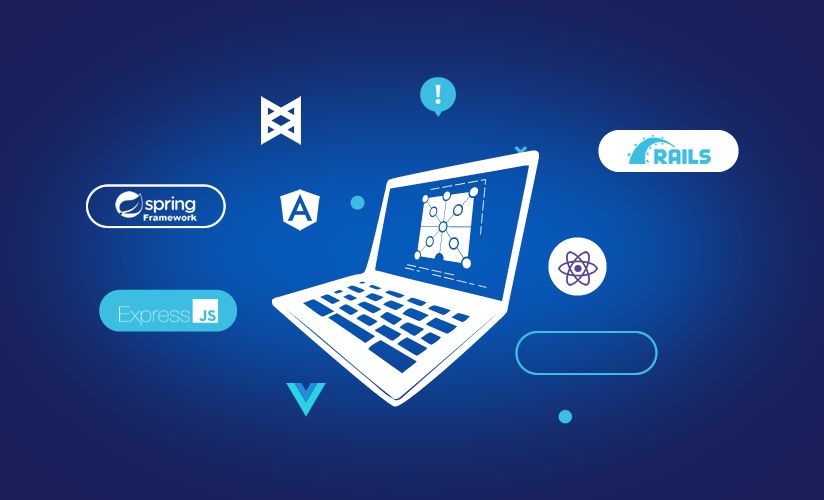
Best Web Development Frameworks In 2019
Frameworks have proven to be an indispensable part of the web development mix. As web application standards continue to rise, so does the complexity of the tech needed. However, it makes no sense to reinvent the wheel for such multifaceted technologies – that is if you can reinvent any of it. That is why using […]...
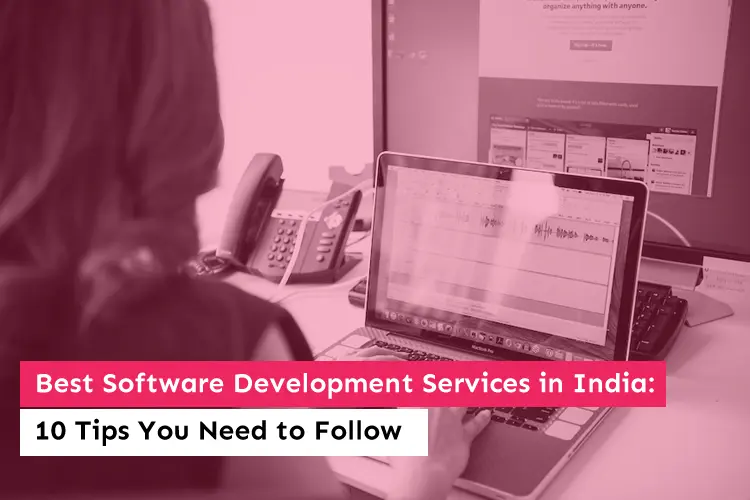
Best Software Development Services in India: 10 Tips You Need to Follow
Are you looking for the best software development services? Stay along! Software is frequently misunderstood as simply technology, but it is much more. Of course, it is technology, but it is also an intuitive and conscious art. High-quality and reliable software is the foundation of any business, regardless of its size or scope of activities. […]...

Enhance Your Business Website: Top 10 Must-Have WordPress Plugins
“Are you harnessing the full potential of your online presence to propel your business forward in today’s digital landscape?” In a world where over 40% of websites are powered by WordPress, it’s evident that businesses are turning to this versatile platform to establish their online presence. WordPress’s dominance isn’t just by chance; its robust ecosystem […]...






